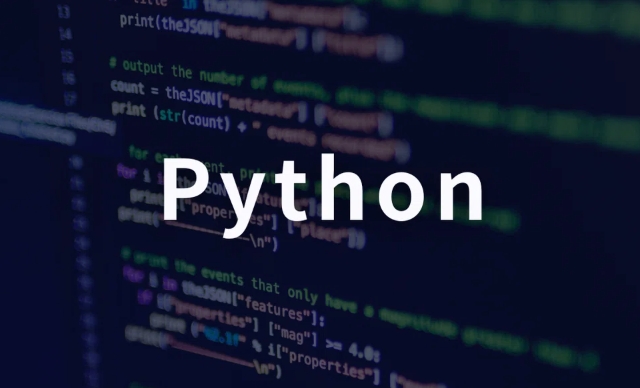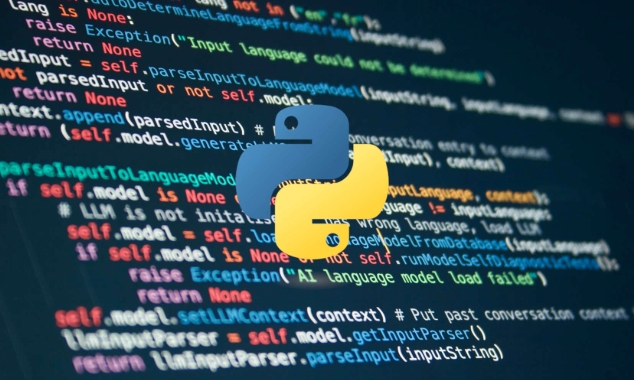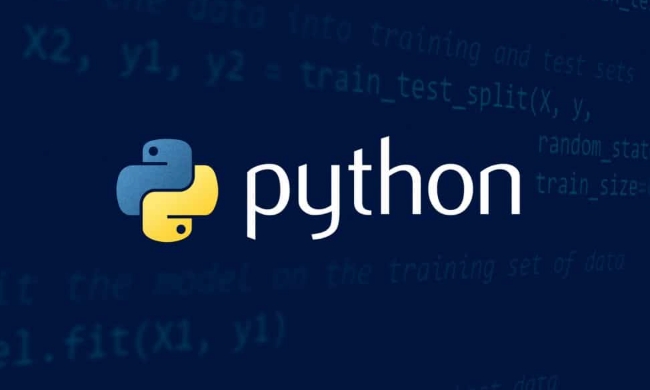The key to using Python for exception detection is to choose the right method and tool. 1. The core idea of anomaly detection is to identify points that are significantly different from most samples, commonly used statistical methods (such as Z-score, IQR), machine learning models (such as Isolation Forest, One-Class SVM) and deep learning methods (such as Autoencoder); 2. Commonly used libraries include scikit-learn, PyOD, pandas, numpy and visual tool matplotlib/seaborn, for example, using IQR method to quickly identify outliers; 3. Practical suggestions include data standardization, combining business logic judgment, reasonable parameter adjustment (such as contamination), and multi-method comparison verification to ensure reliable model effect. As long as you understand the characteristics of the data and use the tools reasonably, abnormal detection is not difficult to achieve.

It is not difficult to use Python to detect abnormalities, but you have to know where to start. Python has many ready-made libraries and methods that are suitable for exception detection tasks in different scenarios. The key is to choose the right tools, clarify the data characteristics, and then run the process step by step.

1. The core idea of abnormal detection
Before doing abnormal detection, you must first understand what "exception" is. Simply put, they are those points that are obviously different from most samples. For example, the sudden increase in the value in the time series and the strange operations that suddenly appear in the user's behavior may be abnormal.
Common practices are:

- Statistical methods: For example, Z-score and IQR methods to determine outliers
- Machine learning models: such as Isolation Forest, One-Class SVM and other algorithms specifically used for anomaly detection
- Deep learning methods: For example, Autoencoder, which recognizes exceptions by reconstructing errors
The key is: What is your data like? If it is tabular data, traditional methods are sufficient; if the data is complex (such as images or text), more complex models may be required.
2. Common libraries and methods to get started quickly
There are several very useful libraries in Python that can help you quickly implement exception detection:

-
scikit-learn: Provides classic models such as Isolation Forest, One-Class SVM, etc. -
PyOD: A library focusing on exception detection, encapsulating dozens of methods -
pandasnumpy: used to preprocess data and calculate statistical indicators -
matplotlib/seaborn: visualize exception points to facilitate checking results
For example, if you have a column of numerical values and want to find out the outlier, you can use the IQR method:
Q1 = df['value'].quantile(0.25) Q3 = df['value'].quantile(0.75) IQR = Q3 - Q1 outliers = df[(df['value'] < (Q1 - 1.5 * IQR)) | (df['value'] > (Q3 1.5 * IQR))]
This is just the most basic method and is suitable for the initial data exploration stage.
3. Practical suggestions and FAQs
When performing abnormal detection, some details are easily overlooked, but have a great impact:
- Data standardization is important : especially when using distance-based methods, large feature dimension differences will affect the effect
- Don't blindly rely on model output : it is best to view it in combination with business logic to avoid misjudgment
- You can't be lazy when adjusting parameters :
contaminationparameters of Isolation Forest will affect the final result and should be adjusted according to the actual data proportion. - Try several methods to compare : No method can win the world, cross-verification can help you find the best way to the current data
For example, suppose you use Isolation Forest to detect exception access behavior in the log:
from sklearn.ensemble import IsolationForest model = IsolationForest(contamination=0.05) df['anomaly'] = model.fit_predict(X)
The above code is very simple, but you have to confirm that the input data X is numerical and normalized, otherwise the model may not be ideal.
Basically that's it. It is not complicated to use Python to detect abnormalities, but to create reliable results, you still have to look at the data, try more methods, and verify the results.
The above is the detailed content of Anomaly Detection in Python. For more information, please follow other related articles on the PHP Chinese website!

Hot AI Tools

Undress AI Tool
Undress images for free

Undresser.AI Undress
AI-powered app for creating realistic nude photos

AI Clothes Remover
Online AI tool for removing clothes from photos.

Clothoff.io
AI clothes remover

Video Face Swap
Swap faces in any video effortlessly with our completely free AI face swap tool!

Hot Article

Hot Tools

Notepad++7.3.1
Easy-to-use and free code editor

SublimeText3 Chinese version
Chinese version, very easy to use

Zend Studio 13.0.1
Powerful PHP integrated development environment

Dreamweaver CS6
Visual web development tools

SublimeText3 Mac version
God-level code editing software (SublimeText3)
 Polymorphism in python classes
Jul 05, 2025 am 02:58 AM
Polymorphism in python classes
Jul 05, 2025 am 02:58 AM
Polymorphism is a core concept in Python object-oriented programming, referring to "one interface, multiple implementations", allowing for unified processing of different types of objects. 1. Polymorphism is implemented through method rewriting. Subclasses can redefine parent class methods. For example, the spoke() method of Animal class has different implementations in Dog and Cat subclasses. 2. The practical uses of polymorphism include simplifying the code structure and enhancing scalability, such as calling the draw() method uniformly in the graphical drawing program, or handling the common behavior of different characters in game development. 3. Python implementation polymorphism needs to satisfy: the parent class defines a method, and the child class overrides the method, but does not require inheritance of the same parent class. As long as the object implements the same method, this is called the "duck type". 4. Things to note include the maintenance
 Explain Python generators and iterators.
Jul 05, 2025 am 02:55 AM
Explain Python generators and iterators.
Jul 05, 2025 am 02:55 AM
Iterators are objects that implement __iter__() and __next__() methods. The generator is a simplified version of iterators, which automatically implement these methods through the yield keyword. 1. The iterator returns an element every time he calls next() and throws a StopIteration exception when there are no more elements. 2. The generator uses function definition to generate data on demand, saving memory and supporting infinite sequences. 3. Use iterators when processing existing sets, use a generator when dynamically generating big data or lazy evaluation, such as loading line by line when reading large files. Note: Iterable objects such as lists are not iterators. They need to be recreated after the iterator reaches its end, and the generator can only traverse it once.
 How to handle API authentication in Python
Jul 13, 2025 am 02:22 AM
How to handle API authentication in Python
Jul 13, 2025 am 02:22 AM
The key to dealing with API authentication is to understand and use the authentication method correctly. 1. APIKey is the simplest authentication method, usually placed in the request header or URL parameters; 2. BasicAuth uses username and password for Base64 encoding transmission, which is suitable for internal systems; 3. OAuth2 needs to obtain the token first through client_id and client_secret, and then bring the BearerToken in the request header; 4. In order to deal with the token expiration, the token management class can be encapsulated and automatically refreshed the token; in short, selecting the appropriate method according to the document and safely storing the key information is the key.
 How to iterate over two lists at once Python
Jul 09, 2025 am 01:13 AM
How to iterate over two lists at once Python
Jul 09, 2025 am 01:13 AM
A common method to traverse two lists simultaneously in Python is to use the zip() function, which will pair multiple lists in order and be the shortest; if the list length is inconsistent, you can use itertools.zip_longest() to be the longest and fill in the missing values; combined with enumerate(), you can get the index at the same time. 1.zip() is concise and practical, suitable for paired data iteration; 2.zip_longest() can fill in the default value when dealing with inconsistent lengths; 3.enumerate(zip()) can obtain indexes during traversal, meeting the needs of a variety of complex scenarios.
 What are Python type hints?
Jul 07, 2025 am 02:55 AM
What are Python type hints?
Jul 07, 2025 am 02:55 AM
TypehintsinPythonsolvetheproblemofambiguityandpotentialbugsindynamicallytypedcodebyallowingdeveloperstospecifyexpectedtypes.Theyenhancereadability,enableearlybugdetection,andimprovetoolingsupport.Typehintsareaddedusingacolon(:)forvariablesandparamete
 What are python iterators?
Jul 08, 2025 am 02:56 AM
What are python iterators?
Jul 08, 2025 am 02:56 AM
InPython,iteratorsareobjectsthatallowloopingthroughcollectionsbyimplementing__iter__()and__next__().1)Iteratorsworkviatheiteratorprotocol,using__iter__()toreturntheiteratorand__next__()toretrievethenextitemuntilStopIterationisraised.2)Aniterable(like
 Explain Python assertions.
Jul 07, 2025 am 12:14 AM
Explain Python assertions.
Jul 07, 2025 am 12:14 AM
Assert is an assertion tool used in Python for debugging, and throws an AssertionError when the condition is not met. Its syntax is assert condition plus optional error information, which is suitable for internal logic verification such as parameter checking, status confirmation, etc., but cannot be used for security or user input checking, and should be used in conjunction with clear prompt information. It is only available for auxiliary debugging in the development stage rather than substituting exception handling.
 How to test an API with Python
Jul 12, 2025 am 02:47 AM
How to test an API with Python
Jul 12, 2025 am 02:47 AM
To test the API, you need to use Python's Requests library. The steps are to install the library, send requests, verify responses, set timeouts and retry. First, install the library through pipinstallrequests; then use requests.get() or requests.post() and other methods to send GET or POST requests; then check response.status_code and response.json() to ensure that the return result is in compliance with expectations; finally, add timeout parameters to set the timeout time, and combine the retrying library to achieve automatic retry to enhance stability.






